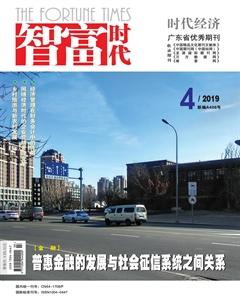Analysis of A Clash of Cultures at Alabama Factory Based on Hofstede
张荣红
【Abstract】Under the influence of globalization and popularity of Global Village, connections among countries are much closer and more complex. Many companies are seeking opportunity overseas, the number of transnational enterprises and Sino-foreign joint ventures growing yearly. Take Geert Hofstedes five dimensions of culture as theoretical framework, this article analyses a piece of news reported by Wall Street Journal.
【Keywords】Transnational Enterprises; Intercultural Communication; Dimensions of Culture
I. Introduction
With the development of globalization and economy, ties among countries is closer. Intercultural business communication becomes a commonplace and its importance cannot be ignored. Moreover, with Chinas reform and opening policies numerous Chinese companies endeavor to go global to establish their international image and brand. However, since the differences in cultures, difficulties remain while going global. Hofstedes five dimensions of culture is critical in the analysis of intercultural communication.
This article is designed to analyze the news with an attempt to find whether the cultural crushes encountered by transnational enterprises can be illustrated by Geert Hofstedes five dimensions of culture.
II. Theoretical Framework
In 1980, the Dutch researcher Geert Hofstede first published his results after doing a research on the employees of IBM in 40 countries. He identified four value dimensions of culture and in 1984, Hofstede and Bond identified the fifth dimension.
Individualism vs Collectivism describes cultures from loosely structured to tightly integrated. Masculinity vs Femininity describes that masculinity implies a societys preference for assertiveness, heroism, achievement and material reward for attaining success. And on the contrary, femininity represents a preference for modesty, cooperation, quality of life and caring for the weak. Power Distance explains the extent to which members who are less powerful in a society accept and also expect that the distribution of power takes place unequally. Uncertainty Avoidance is a dimension that describes the extent to which people in society are not at ease with ambiguity and uncertainty. Long-Term vs Long-term orientation refers to the degree to which people need to explain the plans of future.
The first three dimensions of culture are mainly used to expound the cultural values penetrated in peoples manners and language, and the reasons for the clashes.
III. Analysis of the News Story
In the news, Golden Dragon Precise Copper Tube Group (GD Copper) says it suffers in its cooperation, communication, and conflict management with its American employees. After opening a factory in Alabama, it encountered various problems. Although it has tried to solve those problems and carried out strategies, it still felt hard to find common ground with American workers.
(I) Individualism VS Collectivism
Based on Hofstedes study, America is a country that takes high priority to individualism. Individual achievements, failures, and rights are valued and the interests of individual prevail over that of the group. Whereas under the influence of Confucianism, China puts group interests above the individual ones. It advocates harmony and peace, emphasizes guanxi in doing business.
E.g. 1: The company hosts employees' families at an annual picnics and gives each worker a turkey at Thanksgiving. A banner in steel-walled factory reads in part “You control OUR future.”
From the above sentences, the Chinese boss tries to make American workers feel at ease by organizing an annual picnic, which is normal in China, serving as a tool to keep an intimate guanxi between employers and employees. But American workers do not see it as a boon but an infringement upon their privacy and independence.
(II) Power distance
Power distance is defined by Hofstede as “the extent to which less powerful members of institutions and organizations within a country expect and accept that power is distributed unequally”. From Hofstede's study, China is a country with high power distance, while the America a low one.
E.g. 2: A union, which workers narrowly approved in 2014, is pressing for an increase in wages that currently start at $11 an hour.
From the example, it can be seen that the American workers feel theyre not well protected, and thus certain union is set up to protect their interests. Although the Alabama government urges the local workers to reject the union, the workers still approve the union. American workers value their rights a lot regardless of threats from higher authorities.
(III) Uncertainty avoidance
America is a high uncertainty avoidance culture, while China is a relatively low one. In GD Copper's case, American workers value security seeking, and once feel threatened, they seek help from the union. However, in China peoples awareness towards security seeking gets stronger, but still can accept personal risks.
IV. Conclusion
Based on the news this paper uses Hofstedes dimensions of culture to illustrate the intercultural communication between the two distinct cultures. Although conflicts remain, strategies have been carried out to solve the cultural problems and have some effects, providing an inspiring motive for the Chinese enterprises planning to seek development in overseas markets.
【References】
[1] Hofstede, G. The Cultural Relativity of the Quality of Life Concept. Academy of Management Review. 1984 (3): 389-398.
[2] Hofstede, G. Management in a Multicultural Society, Malaysian Management Review. 1991: 3-12.
[3] Hofstede, G. Culture Consequences. Beverly Hills, CA: Sage. 1980.
[4] Hofstede, G. Cultures and Organizations: Software of the Mind. 1st ed., USA: McGraw-Hill. 1997.
[5] Hofstede, G. Culture's Consequences: Comparing Values, Behaviors, Institutions and Organizations Across Nations. 2nd Edition, Thousand Oaks, CA: Sage. 2001.

